Many people love lawns as much as we do and we want everyone to enjoy their lawn. Unfortuntely, things can go wrong when you are trying to maintain a healthy and attractive lawn. Here is a list of some common lawn problems. No problem is too big and can’t be solved. If you can’t find a solution here or you need more information, we’re happy to help.

Lawn Advice
Weeds and Foreign Grasses
Broadleaf Weeds
Broadleaf weeds are lawn weeds such as Clover, Creeping Oxalis, Daisy, Dandelion and Plantain to name a few. Some weeds grow all year round and some are seasonal. They appear in lawns due to dormant seeds in the ground or through wind, birds or contaminated lawnmowers. Lawns can be treated with a selective weed killer available from our online store. Young lawns will need a different weed killer to established lawns and it is best to spray during periods of active growth. During periods of drought the weed killer will not be as effective and may scorch the lawn.
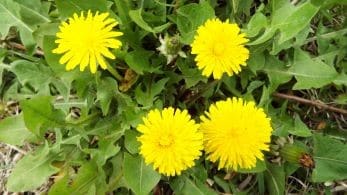
Summer Grass
Summer grasses are a range of grass weeds that arrive when the weather is warm. There are many different varieties of summer grass and they invade both lawns and gardens. They will appear where you have thin grass cover or they can also be blown in on the wind and invade a very good lawn. Some lawns can be treated with over the counter products while others will need to be treated with products under the care of an Approved Chemical Handler. Our staff are trained and can spray these grasses for you. To gain control over a summer grass infestation, we recommend spraying soon after they first appear and again a month later. Effective management can also be achieved through the use of a pre-emergent spray before and during summer.
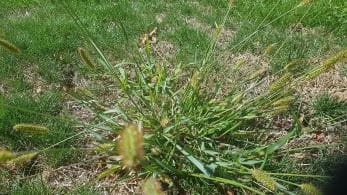
Paspalum
Paspalum also has a grass leaf so is easily confused with summer grass. Unlike summer grass, Paspalum will continue to live past summer or will arrive during the cooler months. It is a very hardy grass weed and grows actively during summer putting up a tall, tough seed head. Paspalum is easy to control using Haloxyfop on fine fescue lawns only. Haloxyfop can be used with caution on lawns blended with fine fescue. It cannot be used on rye, tall fescue or kikuyu lawns. In these situations the Paspalum may need to be sprayed with Roundup (Glyphosate) or cut out and the lawn patched with seed or instant lawn.
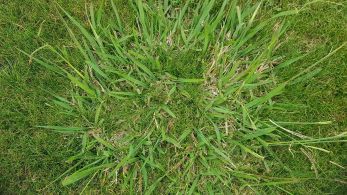
Poa Annua
Poa Annua or ‘Poa’, as it is commonly known, is a very common turf weed and loves wet weather. It usually appears during the winter and spring and can be identified in a lawn by appearing lighter in colour with faster growth and with an obvious whitish seed head very close to the ground. As it is able to drop its seed between mowing, it can spread rapidly. It loves fertiliser, so applying a general fertiliser at this time will be detrimental to your lawn. Poa is very shallow rooted so dies out once the weather warms. This results in large bare areas appearing in the lawn at the start of summer.
To control Poa it is best to ensure your lawn is very healthy with a thick sward of grass as winter approaches. Pendi-Pro, a fertiliser containing a herbicide and pre-emergent, is effective at inhibiting the seeding and spreading of Poa, and Etho-Pro is an effective chemical control.
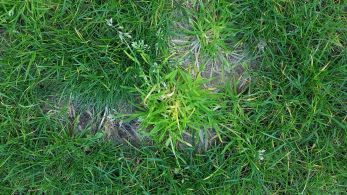
Kikuyu
Kikuyu is an invasive grass that loves warmer weather. During summer, when other lawns are struggling, Kikuyu will happily take over and thrive. Kikuyu will stay alive all year round but will become dormant during frosts. Some people love Kikuyu grass, but to others it is an invasive weed. For those who don’t want a Kikuyu lawn, while it can’t be eradicated, fortunately it can be successfully controlled by applying Grazon. Grazon is a selective herbicide that is effective against Kikuyu and a range of broadleaf weeds.
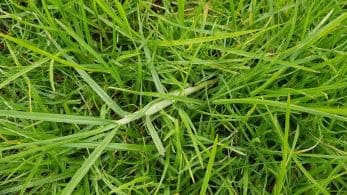
Seeding Grass
Once per year, usually from spring to early summer, some desirable lawn species can go to seed. When their attempt to grow a seed head is regularly cut down with mowing, they grow it horizontally instead. This creates patches of course, messy and undesirable looking grass for a short period of time. Do not attempt to spray or dig out this grass. It is your good grass and it’s good looks will return.
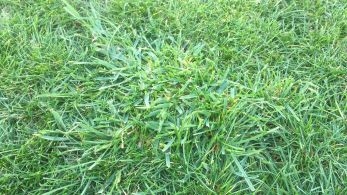
Pests and Diseases
Grass Grub
When grass grub invade your lawn they eat away at the tasty grass roots causing the grass to whither and die under the heat of the sun. They typically revisit the same lawns each year. Damage usually shows up during summer and to the untrained eye looks similar to a lawn that is lacking water. We use Acelepryn®, a preventative treatment that we apply to many lawns in November or December. Acelepryn® is an environmentally friendly Pyrethrin based product that, when applied to the grass, is held within the plant. When the grubs begin eating they are instantly poisoned before damage can occur. Usually one application provides protection for three months. Heavy rainfall will wash the Pyrethrin through the profile and a second application may be needed.
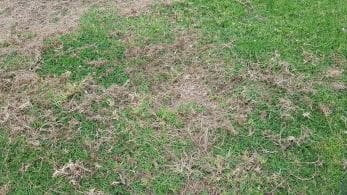
Porina
Like Grass Grub, Porina caterpillars can also cause considerable damage to your lawn. Porina caterpillars live in tunnels in the soil and come up at night to feed on the grass. Their tunnel entrances can be found as holes covered in soil castings. Damage typically occurs in late autumn and during winter. Porina can be treated by applying an insecticide later in the day before the caterpillars come up at night to eat. Most insecticides need to be applied by an Approved Chemical Handler. We have trained staff who can apply these products for you.
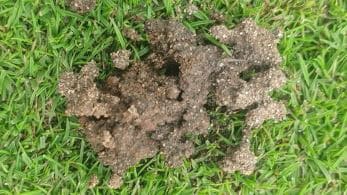
Disease
Most lawn diseases are caused by fungi and are harmless. They can occur very quickly and can disappear just as quickly when conditions change. Other diseases can cause damage to the grass and while some can be treated, others will cause damage that will need to be repaired. As most lawn diseases are caused by weather conditions there is little that can be done to prevent them. To help reduce the chance of disease occurring keep your lawn free of thatch and during the summer apply water only in the early morning. This allows the moisture to dry quickly and not sit on the leaf for long periods.
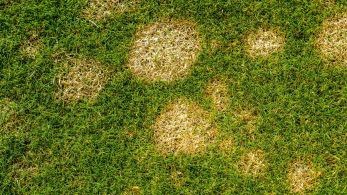
Red Thread
A common disease to occur in lawns is Red Thread. Red Thread can appear at any time of year and typically occurs when the grass is lacking nitrogen. It is identifiable as a pink or red tinge over patches or large areas of grass. Upon closer inspection you can often identify fine threads. The affected grass can look unsightly and discoloured. Treat Red Thread by applying fertiliser to the lawn to increase the nitrogen content. If this is not effective, apply Iron Sulphate to harden the leaf and resist the disease.
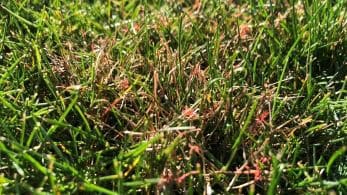
Moss
During winter and wet seasons, moss can appear in some lawns. Moss usually grows in damp, compacted soils and shady areas. Left untreated, moss will take over the grass and die when the weather dries out leaving bare patches. Treat moss when it appears with Iron Sulphate and consider aerating the soil and pruning surrounding trees to help prevent it returning.
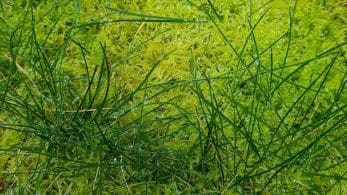
Fungi
At any time during the year when wetter weather is about, fungi will appear in some lawns. There are many different types of fungi and it is rarely anything to worry about. It will disappear without intervention as quickly as it appeared.

